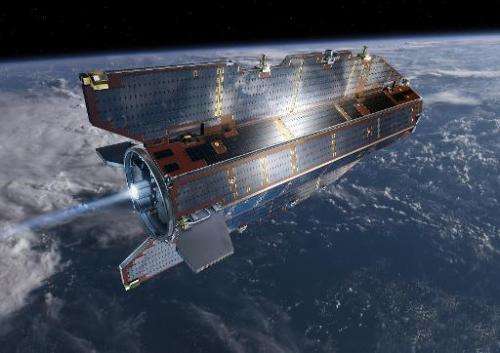European science satellite to break up late Sunday (Update)

Fragments from a science satellite are likely to crash to Earth late Sunday or early Monday after the one-tonne probe breaks up at the end of its mission, the European Space Agency (ESA) said on Friday.
In a statement, the agency said when and where the pieces would land was still unclear.
Experts have previously said the statistical risk to humans is remote.
Several dozen fragments totalling around 200 kilos (440 pounds), or about the weight of car engine, will survive contact with the atmosphere, according to computer models.
The Gravity Ocean Circulation Explorer (GOCE) satellite was placed in orbit in 2009 on a mission to monitor variations in gravity and sea levels.
The sleek, finned craft ran out of fuel on October 21, leaving it without power to maintain its altitude in low orbit, where there are still lingering molecules of air.
"Reentry of GOCE into Earth's atmosphere is predicted to occur during the night between Sunday and Monday," ESA said on Friday.
"Break-up of the spacecraft will occur at an altitude of approximately 80 km (50 miles). At the moment, the exact time and location of where the fragments will land cannot be foreseen."
GOCE was launched in March 2009 at an altitude of 260 kilometres (160 miles)—later lowered to 224 km—the lowest ever for a research satellite.
The 350-million-euro ($465-million) mission has lasted twice as long as its initially-scheduled 20 months.
According to ESA spacecraft operations manager Christoph Steiger, most of the 5.3-metre-long (17.2-foot) spacecraft will burn up.
The chances of a human being hit were about 65,000 times lower than getting struck by lightning, he said in October.
In more than half a century of spaceflight, there have been no casualties from man-made space debris, despite about 20-40 tonnes impacting somewhere on Earth each year, Steiger said.
GOCE was designed and built before 2008, when international recommendations were adopted that a scientific satellite must be able to execute a controlled reentry, or burn up completely after its mission.
© 2013 AFP




















